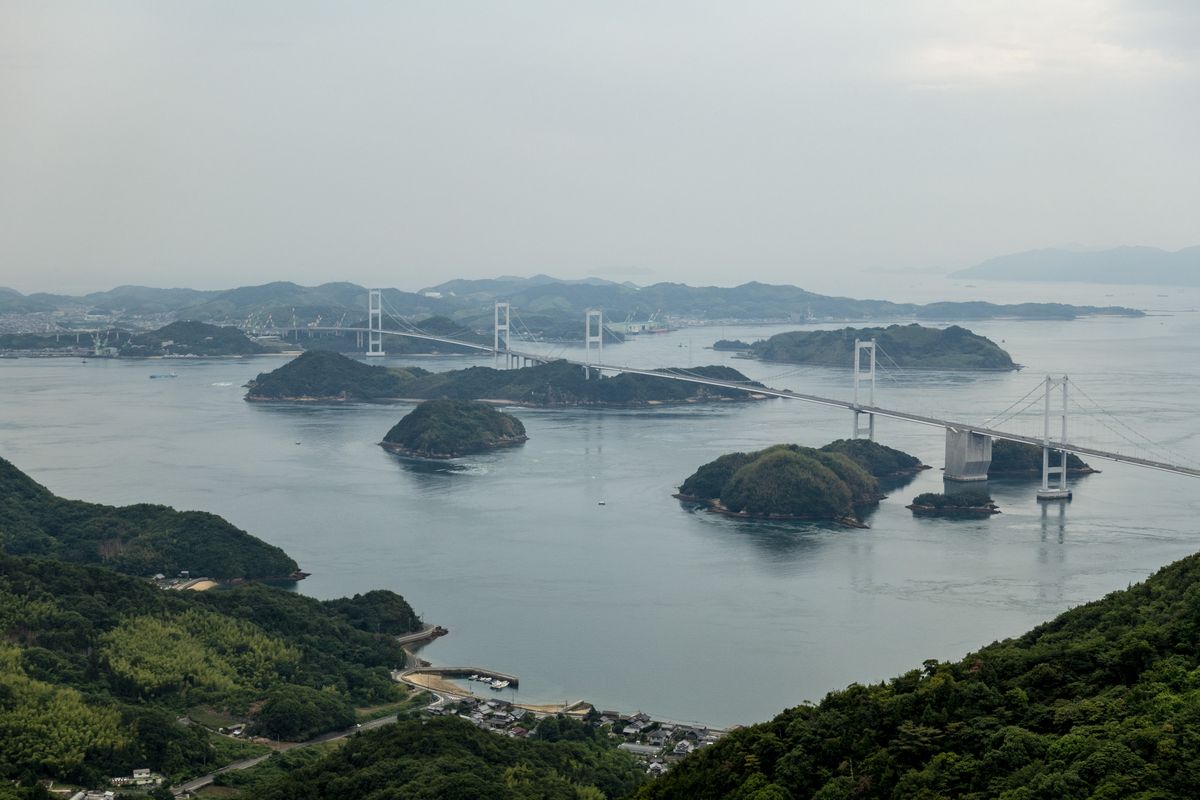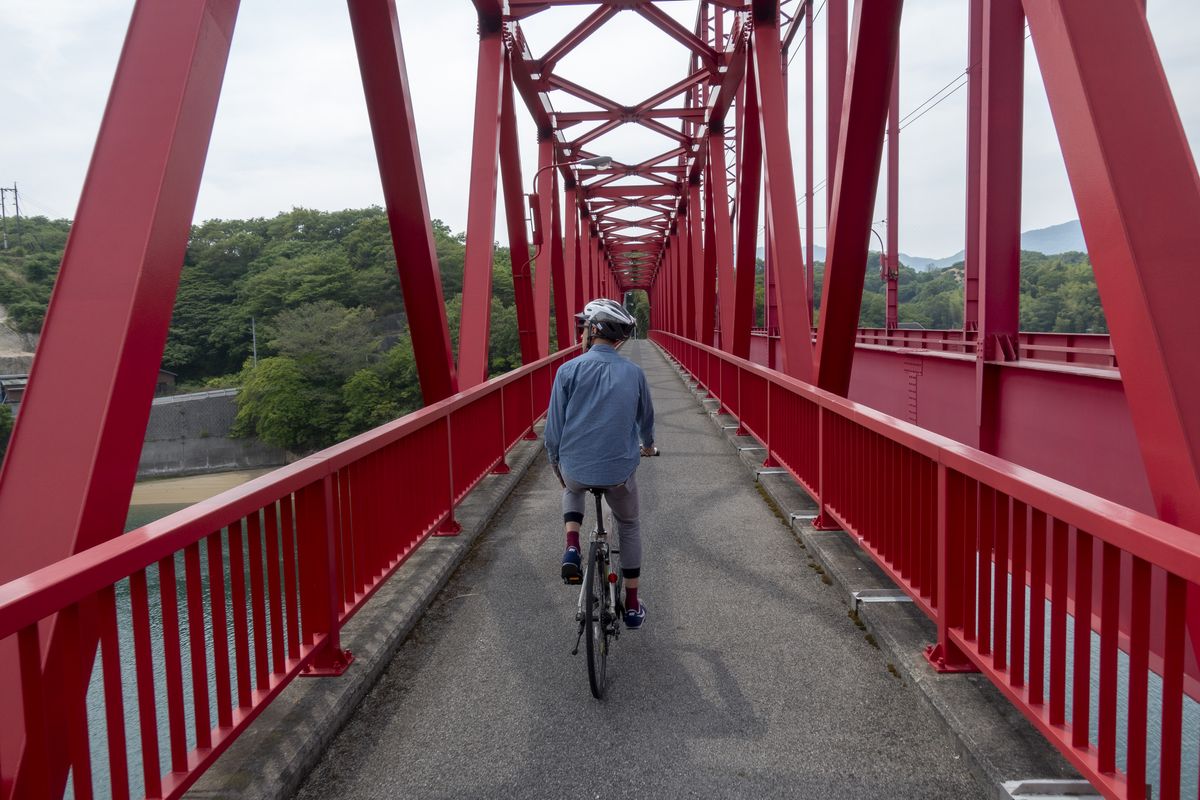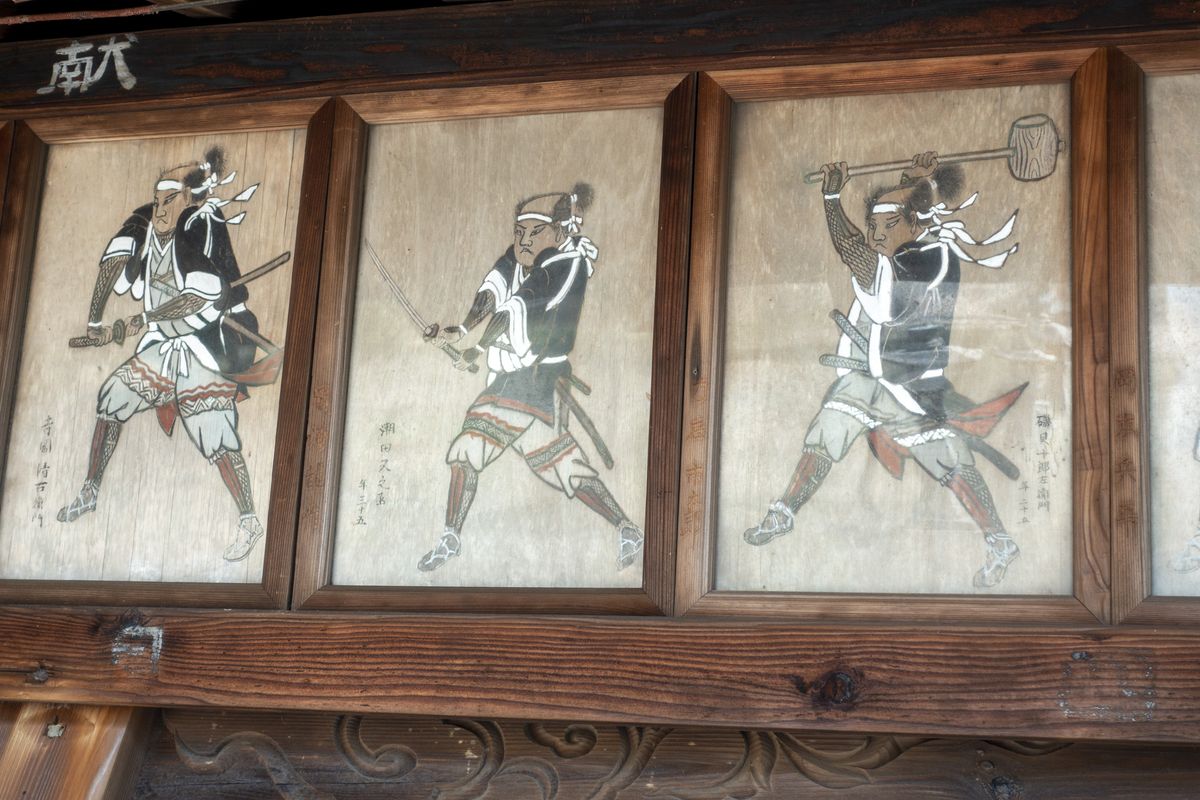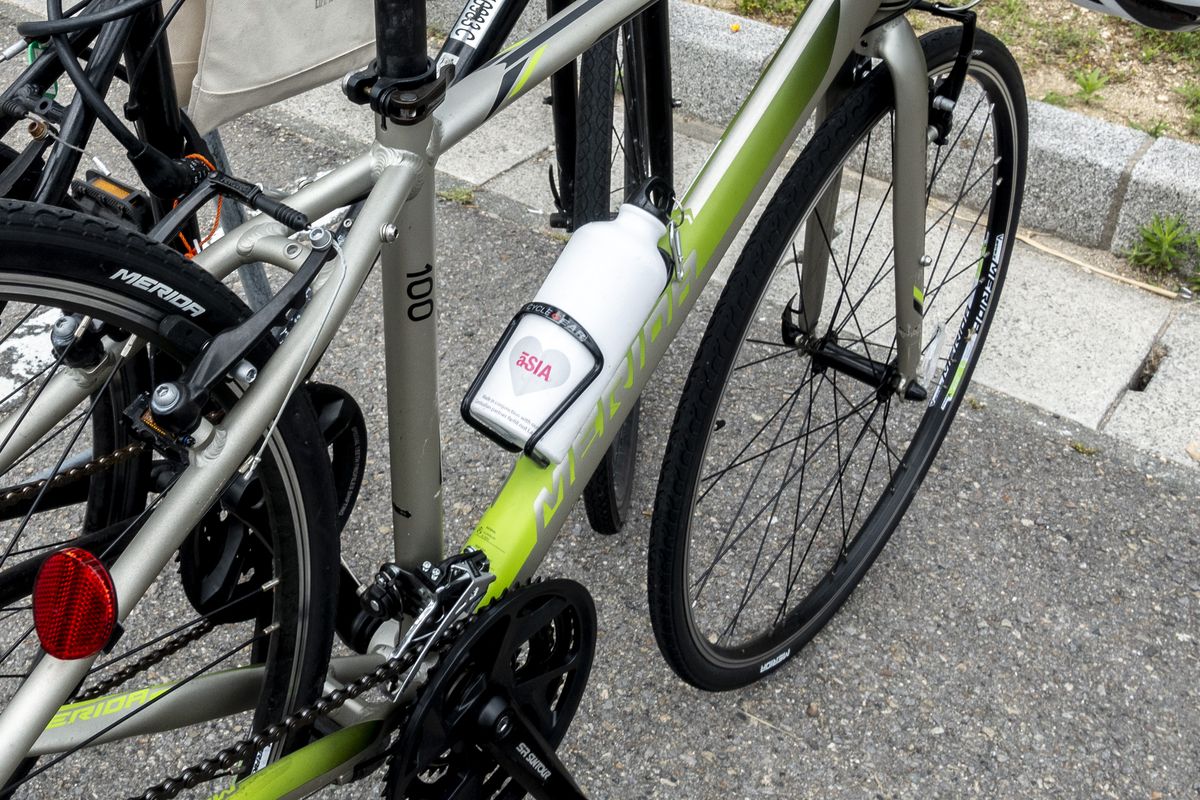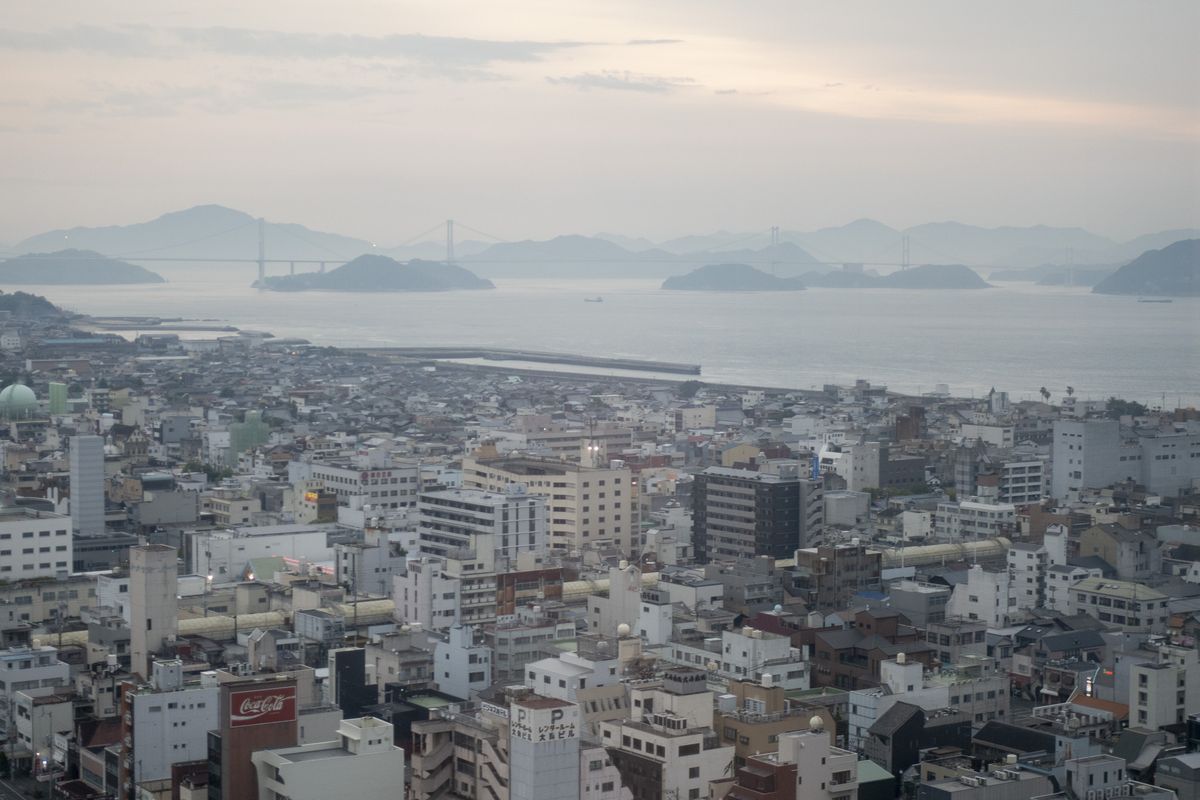Team travel: cycling Japan's Shimanami trail
by Nick
Image gallery
Nick recently visited Japan to cycle the famous Shimanami Kaido trail. Heading from Onomichi to Imabari, he crossed the islands of Mukaishima and Innoshima, before stopping on the western shores of Ikuchijima (38km) at a ryokan for the night. He continued the following day onto Omishima, Hakatajima and Oshima (53km) before crossing the impressive 4km long bridge into Imabari. And lived to tell the tale! Here it is...
 'The moment you arrive in Onomichi, the pace of life drops like an ice cube into a cool glass of umeshu. The town is only an hour or so from Kyoto or Osaka, and it’s undoubtedly a significant - ahem - change of gear.
'The moment you arrive in Onomichi, the pace of life drops like an ice cube into a cool glass of umeshu. The town is only an hour or so from Kyoto or Osaka, and it’s undoubtedly a significant - ahem - change of gear.
It came across as the sort of place you run away to, easily settling into the slow daily rhythm of the place, discovering others like you. I immediately wanted to unpack my bags.
I soon discovered that young city dwellers from Osaka, Kyoto, Tokyo and across Japan were resettling here, searching for a quieter pace of life… not unlike certain London folk relocating to the shores of Brighton – guilty!
There are lots of really interesting pop ups and artisan businesses. Perhaps astonishingly to those of us that think of the cost of living being so high in Japan (property is typically not), the Japanese will often just desert their homes in places like Onomichi. These, along with other disused spaces, are being reclaimed and reused - arranged by an NGO that is active in the area.
A number of artists have moved in, and there is quite a quirky vibe in places. The town runs from the waterside up a very steep hillside, which is packed tightly with small cottages, temples and the occasional artisan workshop, along with the requisite owl and cat cafés. Heading up to the summit, a rope lift takes you up to a wonderful viewpoint, which gave us an idea of the landscape we would cycle through over the coming days – a blend of great beauty and suburban industry.
We’d arrived at the Shinkansen station - it's 10-15 mins drive from the centre of town, which perhaps reinforces the sense of slowing down. (Although it's worth noting that there is a very convenient central train station for normal non-bullet services.) We met Peter, our American-born guide, and Satoshi-san, who was there representing the regional Tourist Board. They are both singular, interesting people, with just my level of eccentricity - we immediately hit it off, and I knew I was in for a treat!
The starting point of the Shimanami Kaido - a 70km or so (distance depends on your choice and order of stops) bike route which crosses six islands scattered in the Seto Inland Sea. The route is in fact part of a continuous road link between Japan’s biggest island, Honshu (which is where you'll find the famous places, such as Tokyo and Kyoto) and the far less visited Shikoku.
Away from the bright lights
Regardless of how often you care to slip into your lycra onesies, this is route well worth travelling, whether you are into cycling or not. It shows you Japan away from the bright lights, shinkansens, restaurant piled upon restaurant, trendy street hipsters - this is a place where they play the 5pm melody right across the islands, every day, to let you know that the working day is over.
Just five minutes from Onomichi, at Mukaishima - the next ferry stop along - the pace drops even further. There are few people, no traffic - nothing but the open road ahead. Although conveniently the road has a solid blue line, which runs the entire kaido, to make sure you don’t lose your way. On occasion you can leave it in search of a lookout point, a temple or a small town that lies off the route, then rejoin once your curiosity itch is scratched. For the next two days, we cycled alongside orchards, small farms, the occasional hamlet, and the odd café or rest stop.
Traversing the Inland Sea
Along with the endless blue line, the sea was a constant for much of the trip, with the road often running mere yards from the water’s edge. Indeed, we cycled over the water several times, as we crossed the dramatic awe-inspiring suspension bridges which link each of the islands.
Amongst all this predominantly rural beauty, we encountered huge shipyards - shipping is a very important industry in this region. Unlike shipyards I’ve seen before, these ones blended seamlessly with the more sedate small-scale beauty alongside them. They were neat and orderly - even beautiful. The residential and the natural beauty of these islands sit alongside each other with grace. It’s hard to put a finger on how or why, but at no stage did I feel like I was cycling through an ugly or industrial landscape - my focus just jumped from one interest to another. At one moment, we were looking down at the entire skeleton of a ship laid out on the ground, like pieces of a huge jigsaw waiting to be assembled... the next, we were peddling through citrus groves, with wild garlic scents in the air.
Large sections of the trail are of course more rural, with a cluster of houses or a small villages the only interruption to the sea on one side, and on the other, sweeping groves of fruit running down a hillside, or fields full of vegetables. And for the duration, there was nothing ahead but a near empty road.
Another great bonus is that even over small distances, the food changes from one stop to the next, with local delicacies seemingly only served in one village or on a single island. With so many nice ice cream shops, small cafes and local eateries, it was probably a good thing we were burning so many calories!
We also stopped off at a sprinkling of shrines - these are off the route, and you need to know how to get to them. Which brings me to the question...
Do you need a guide?
Certainly you are extremely unlikely to get lost without one. I've never known somewhere to be so well signposted. The blue line leads the way, and there are some other lines on a couple of other islands, to get you to other places of interest. Food can be ordered by finger-pointing and Google Translate. However - and not to sound frivolous about costs, because good guides are a major % of your costs - we were a hundred times richer for the time we spent with Peter. Because of him, we had conversations we would otherwise have only shared a 'konichiwa' with, and learned so much about the route and the landscape around us, not to mention seeing hidden gems that required us to leave the trail. Without a guide we would have seen many of the same things, but it was thanks to Peter's 30 or 40 rides along this route that we were able to explore so much. Without him, we wouldn't have learnt all about what we were seeing - the bigger picture.
Arriving at the end of our ride in Imabari, we were certainly tired, and glad to get out of the saddle. But I’d have happily got back on the following day. Imabari itself doesn’t hold much allure for the tourist, although the 4km long bridge and the views from the top of the Imabari Kokosai Hotel are superb. I love these sorts of places - where people just leave you to get on with your business, and you can sit down alongside them in an izakaya and get a nod of respect for making the effort to learn about their hometown. Also I ate raw chicken sashimi for the first time. You know what? It tastes like chicken…
In hindsight
If I did it again - I would, in an instant! It was one of my favourite travel experiences in any country. Ever. You can break the route in different places. A good cyclist on the machine of their choice will comfortably complete the kaido in a day, and could either cycle back the next, or head onwards into Shikoku. If - when! - I cycled it again, I’d push it a little harder, going as far as Omishima on the first day, and breaking for two nights at Ikoi no ie.
Omishima is by far the most diverse of all the islands you’ll visit, with temples, interesting villages (one famed for its wild boar, and I can tell you first hand that it’s worth the journey), a craft brewery, the Kin Iwata Mother & Child Museum, the Museum of Art, Tima Nimbari (a very cool architecture place), and Tokoro Museum, to name just a few. You won’t want to cycle between them all, if only because the trails and roads are not fit for purpose in some places. However, we can arrange a driver for the day to ensure you make the most of your stop.
There are also other islands, and they're all reachable by bike - you don’t have to stick to the route. This is a region where we can really personalise a trip and create a distinctively different experience to our competitors. You might want to visit Rabbit Island, which is quite possibly the inspiration for the Great Lord Wes Anderson's Isle of Dogs. Or perhaps Yuge-jima island, where you can spend time on a farm; the owners take you into the fields (you will certainly need a translator-guide) to learn about the land and their processes. On a neighbouring island you can stay at a very old farm house where they heat the bathwater with fire... the list goes on, and if any of it sounds like your idea of a good time - all you need to do is give us a call.'
Speak to one of our Japan Specialists on +44 (0)1273 670 001, or send us your enquiry.
by Nick on 15th August 2019
